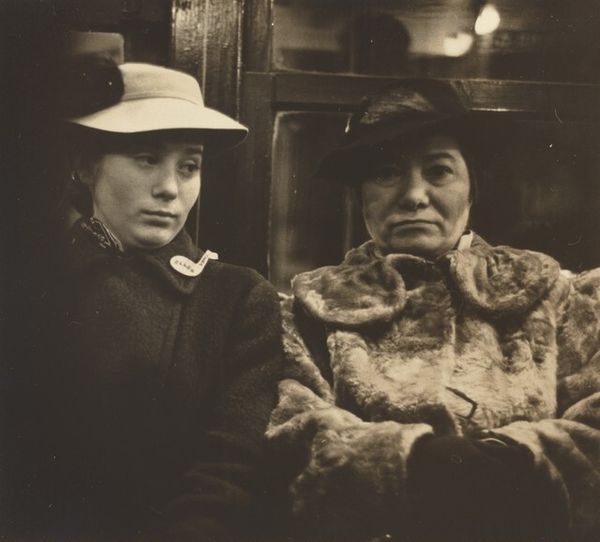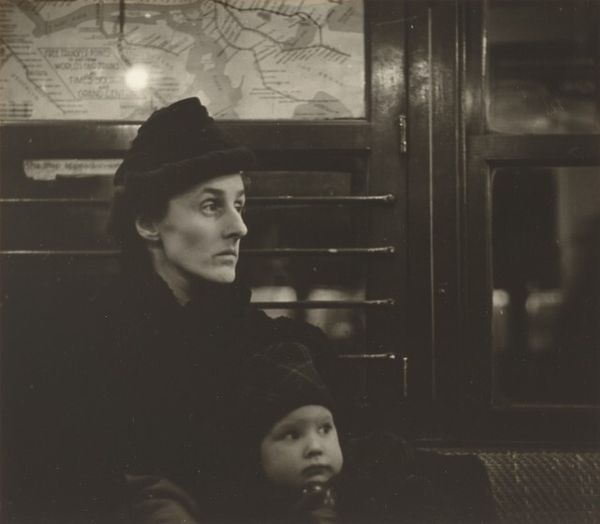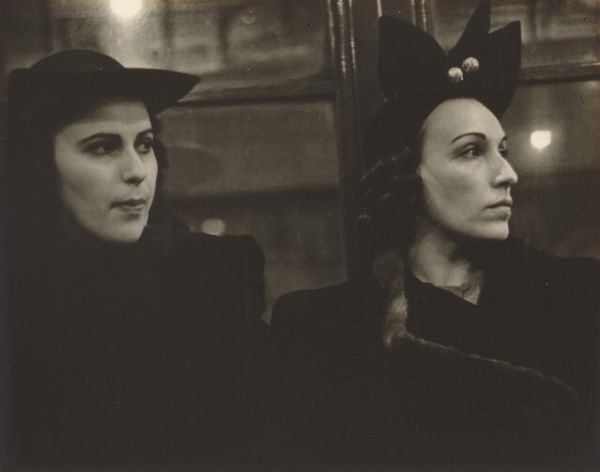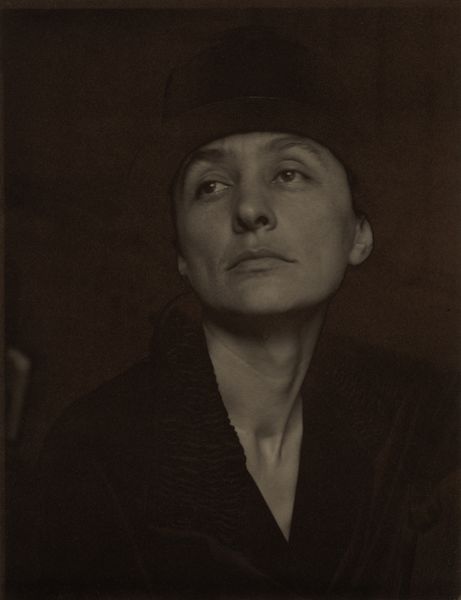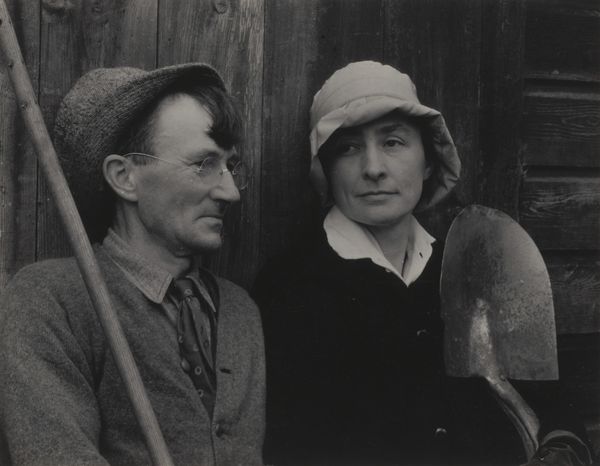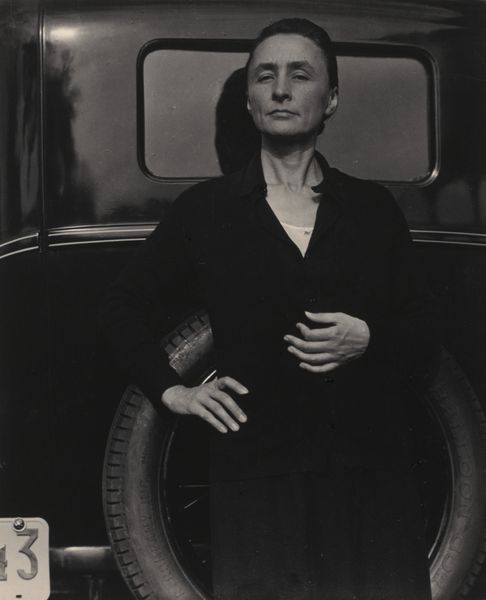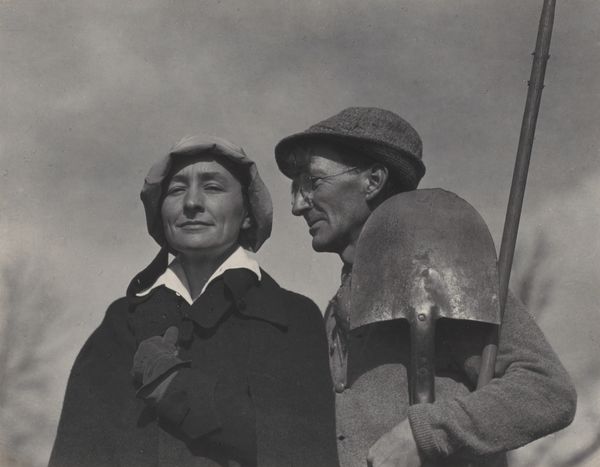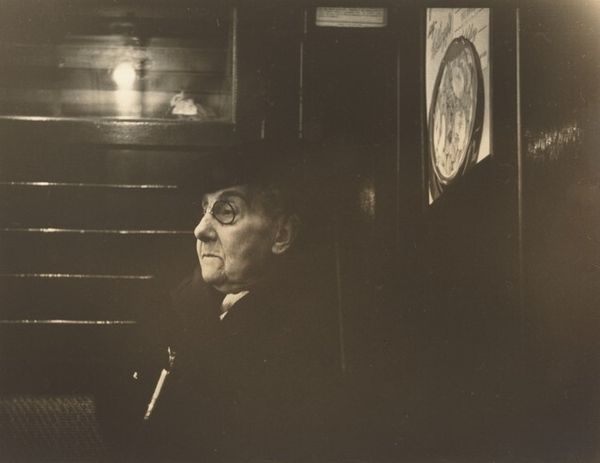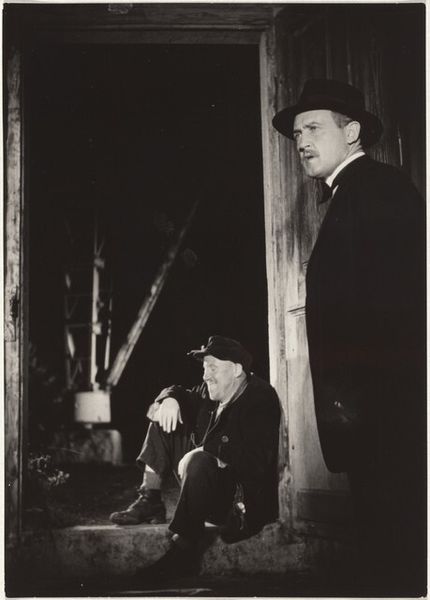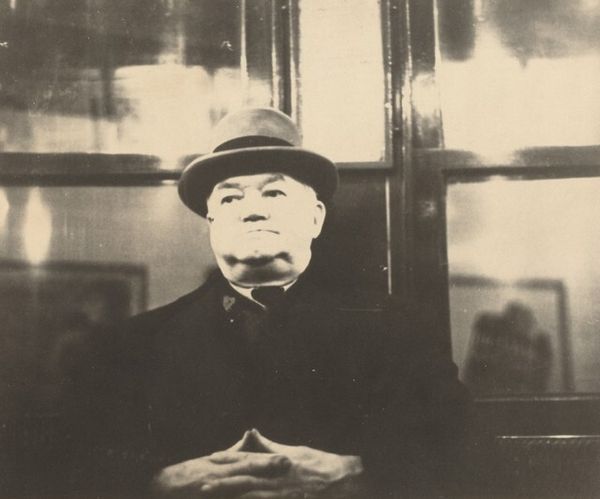
photography, gelatin-silver-print
#
portrait
#
street-photography
#
photography
#
historical photography
#
gelatin-silver-print
#
monochrome photography
#
ashcan-school
#
realism
#
monochrome
Dimensions: sheet: 20.2 x 25.2 cm (7 15/16 x 9 15/16 in.)
Copyright: National Gallery of Art: CC0 1.0
Curator: This gelatin silver print, "Subway Portrait" by Walker Evans, was taken sometime between 1938 and 1941. It depicts two figures sitting side-by-side in a subway car. What's your initial response to it? Editor: The first thing that strikes me is the pervasive sense of isolation. The grayscale rendering deepens this mood. Each person seems lost in thought, disconnected from the other, from their surroundings. It really communicates urban alienation. Curator: Absolutely. Evans' work often explored social realism. But, the work goes beyond documenting Depression-era America, and prompts discussion about individual identities when facing socio-economic difficulties. This image encapsulates anxieties of gender and class in times of crisis, do you agree? Editor: I do, especially considering Evans' other work during that period, documenting rural poverty, which were funded by The Farm Security Administration. These "Subway Portraits," however, provide a parallel glimpse into urban life during the same era. The subway car acts as a social microcosm; the forced proximity emphasizes social class, and race within New York society. There's almost a detached, anthropological quality in his observation. Curator: His technique of using a hidden camera contributes to the sense of authenticity. He captured unguarded moments that become testaments of collective anxieties of Americans at that moment, especially in the intersectionality between private concerns and shared public transportation experiences. How do you think viewers at the time responded to the idea that they might unknowingly be observed and documented? Editor: It likely sparked debate regarding privacy and public space. The surreptitious nature of the photographs raises important ethical considerations. Even today, with constant surveillance and social media, those questions of consent and representation continue to be incredibly relevant in social documentary practices. Curator: Exactly, this extends into who gets to decide what images are seen and how they circulate in shaping perception and historical memory. The subjects' unawareness adds another layer of interpretive possibilities for contemporary audiences, who will project ideas and perceptions onto them. Any final reflections? Editor: For me, the photograph embodies the complexity of American life during the Depression. It’s not just a historical document, but also prompts examination of enduring themes of privacy, identity, and class disparities that shape American society even now. Curator: I agree; Evans presents us not just with a picture of two people in a subway, but invites viewers to become complicit observers in an act of representation that echoes today's social dialogues around authenticity, identity and power.
Comments
No comments
Be the first to comment and join the conversation on the ultimate creative platform.

